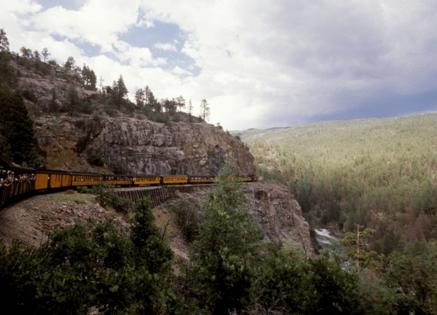Ten years after a mine spill turned a Colorado river yellow, basin awaits wider cleanup. 'Doing things right takes time'
Published in Science & Technology News
Three million gallons of acidic mine drainage flooded into the Animas River basin 10 years ago, turning the southern Colorado river a mustard yellow and making international headlines.
Caused by federal contractors working to treat pollution from the Gold King Mine, the accidental release of water laden with heavy metals prompted the creation of a Superfund site and a reckoning with lingering environmental harms from the area’s mining legacy, including hundreds of abandoned mines high in the San Juan mountains.
A decade later, community members and Environmental Protection Agency staff are still grappling with the long-term cleanup of the area’s mines and tailings piles. Forty-eight of them now make up the Bonita Peak Mining District Superfund site outside Silverton. They continue to leak heavy metals into local waterways and soils.
“We’re pleased that the EPA is at the point where in the next 18 months, we’re going to see some decisions made about how those sites are cleaned up,” said Chara Ragland, the chair of the site’s community advisory group.
Studies have since shown that the Aug. 5, 2015, Gold King spill had little long-term environmental impact because the water already contained so many heavy metals from runoff and other mines. Locals hope the federal Superfund cleanup process will improve water quality in the Animas River basin so that it will be cleaner than before the Gold King incident.
“Doing things right takes time, but we’re committed to long-term results,” EPA Regional Administrator Cyrus Western said in a statement last week.
The Superfund process has been slow, but it is the only legal tool available to clean up abandoned mines, said Ty Churchwell, the community advisory group’s secretary and the mining coordinator for Trout Unlimited.
“For me, there’s no use in complaining,” Churchwell said. “I’d rather do a thorough job than rush a job and screw it up.”
Progress so far
In the months after the spill, the EPA constructed a water treatment plant to clean the discharge from the Gold King mine. That plant continues to function today, treating between 300 and 500 gallons of water a minute before it flows into Cement Creek — a tributary to the Animas River.
After intense community debate, the EPA in September 2016 created the Bonita Peak Superfund Site to tackle pollution from the Gold King Mine and 47 other historic mining sites in San Juan County around Silverton. The site covers about 140 square miles and includes abandoned mines and tunnels as well as piles of mining waste rock that leak heavy metals.
There are five steps between the creation of a Superfund site and when the government delists it because it considers the work complete. Overall, the Bonita Peak Mining District remains on step one: collecting data on the extent of contamination and assessing risks from that contamination.
The EPA has spent years evaluating the baseline level of aquatic and terrestrial health, surveyed water quality and studied the labyrinth of mine tunnels and shafts in the area.
In the meantime, the EPA has also completed the cleanup of more than 20 smaller projects on the Superfund site, like covering lead-contaminated soils at campgrounds and pulling mining waste rock out of creeks and rivers.
The EPA is also building a waste repository facility — expected to be finished this year — that will store the sludge created by the water treatment plant outside the Gold King Mine, along with waste from future cleanups on the broader Superfund site.
“A lot of these areas have needed to be addressed for a long time, and I’m not sure they would have been had the Superfund process not begun,” Ragland said.
What’s next?
Now the EPA, its contractors and the community advisory group are getting ready to decide how to address the Superfund site’s three major pollution sources.
But “getting ready” to make a decision might mean a two-year process, Churchwell warned.
“That’s just the way Superfund works,” he said.
Progress accelerated in the last three years, thanks to money allocated under the 2021 Bipartisan Infrastructure Law and a stable project management team, Ragland said.
But federal staffing chaos this year under the new Trump administration has caused setbacks, she said.
For example, work to finish the waste repository was slated to begin in June, but the EPA still does not have a contract to complete the work because of firings, early retirements and reassignments in the agency’s contracting office, she said.
While the Gold King Mine spill was scary, the cleanup work that has followed likely wouldn’t have happened without the Superfund designation it prompted, Ragland said.
To gauge progress, Churchwell will look for the return of trout in streams where the fish have been absent for decades.
Already, there have been signs of improvement in Mineral Creek.
A federal fish survey in 2019 found trout in a stretch of the stream that had been devoid of the species for decades, Churchwell said. A few years prior to that, a community coalition called the Animas River Stakeholders Group had cleaned up waste rock piles near the stream.
The hope for a better future is what has kept Churchwell, Ragland and other members of the community advisory group working to improve water quality in the basin — some of them for decades.
“We’re very focused on the fact that we live here and we want this area to be somewhere we can live and recreate well into the future,” Ragland said.
_____
©2025 MediaNews Group, Inc. Visit at denverpost.com. Distributed by Tribune Content Agency, LLC.







Comments